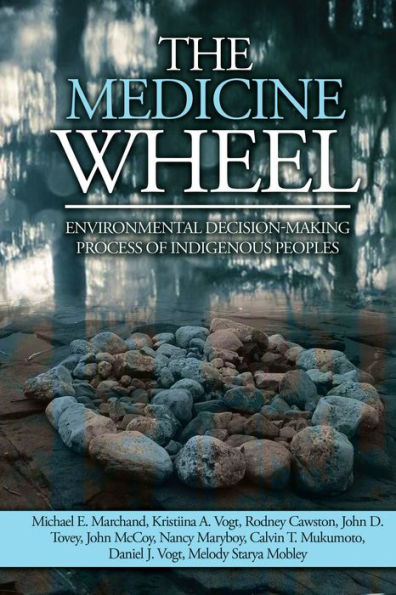The Medicine Wheel built by Indigenous people acknowledges that ecosystems experience unpredictable recurring cycles and that people and the environment are interconnected. The Western science knowledge framework is incomplete unless localized intergenerational knowledge is respected and becomes part of the problem-definition and solution process. The goal of this book is to lay the context for how to connect Western science and Indigenous knowledge frameworks to form a holistic and ethical decision process for the environment. What is different about this book is that it not only describes the problems inherent to each knowledge framework but also offers new insights for how to connect culture and art to science knowledge frameworks. Read this book and learn how you can move beyond stereotypes to connect with nature.
"1134287295"
The Medicine Wheel: Environmental Decision-Making Process of Indigenous Peoples
The Medicine Wheel built by Indigenous people acknowledges that ecosystems experience unpredictable recurring cycles and that people and the environment are interconnected. The Western science knowledge framework is incomplete unless localized intergenerational knowledge is respected and becomes part of the problem-definition and solution process. The goal of this book is to lay the context for how to connect Western science and Indigenous knowledge frameworks to form a holistic and ethical decision process for the environment. What is different about this book is that it not only describes the problems inherent to each knowledge framework but also offers new insights for how to connect culture and art to science knowledge frameworks. Read this book and learn how you can move beyond stereotypes to connect with nature.
29.99
In Stock
5
1

The Medicine Wheel: Environmental Decision-Making Process of Indigenous Peoples
465
The Medicine Wheel: Environmental Decision-Making Process of Indigenous Peoples
465eBook
$29.99
$39.95
Save 25%
Current price is $29.99, Original price is $39.95. You Save 25%.
Related collections and offers
29.99
In Stock

Product Details
| ISBN-13: | 9781628953954 |
|---|---|
| Publisher: | Michigan State University Press |
| Publication date: | 03/01/2020 |
| Sold by: | Barnes & Noble |
| Format: | eBook |
| Pages: | 465 |
| File size: | 12 MB |
| Note: | This product may take a few minutes to download. |
About the Author
From the B&N Reads Blog
